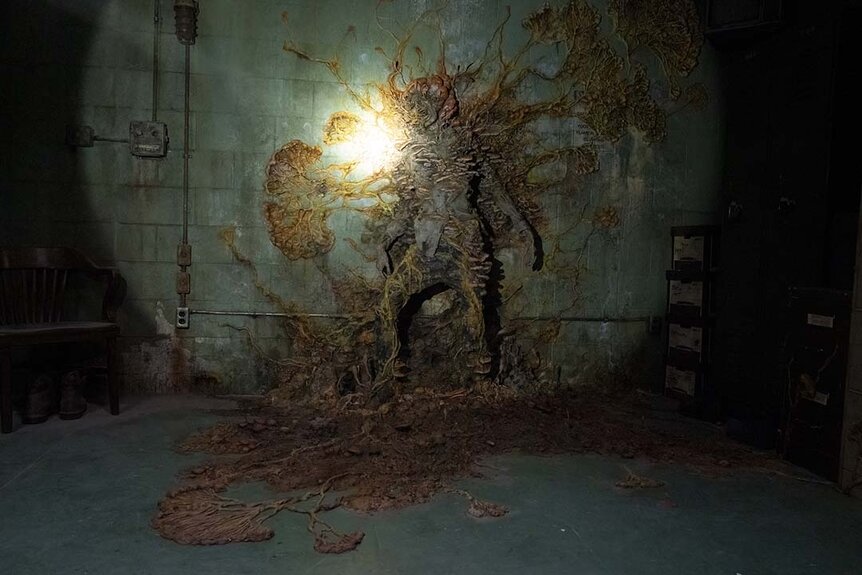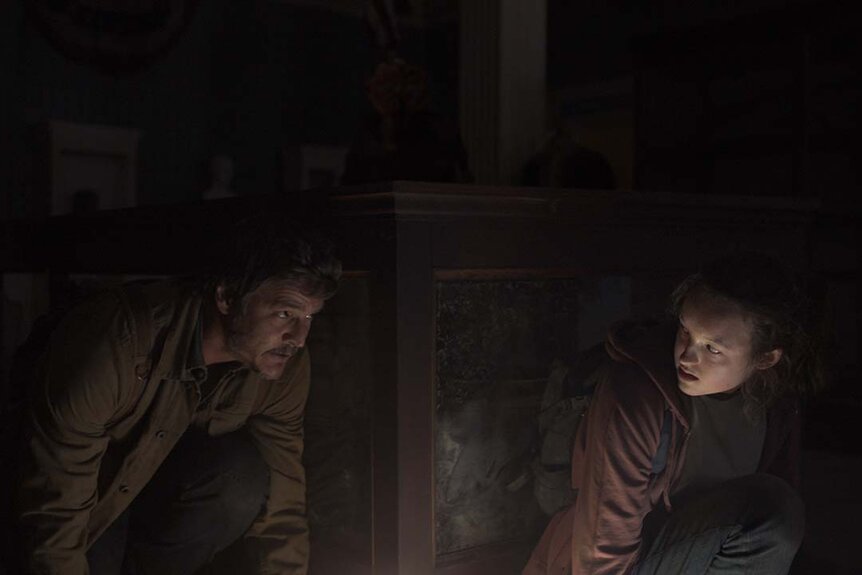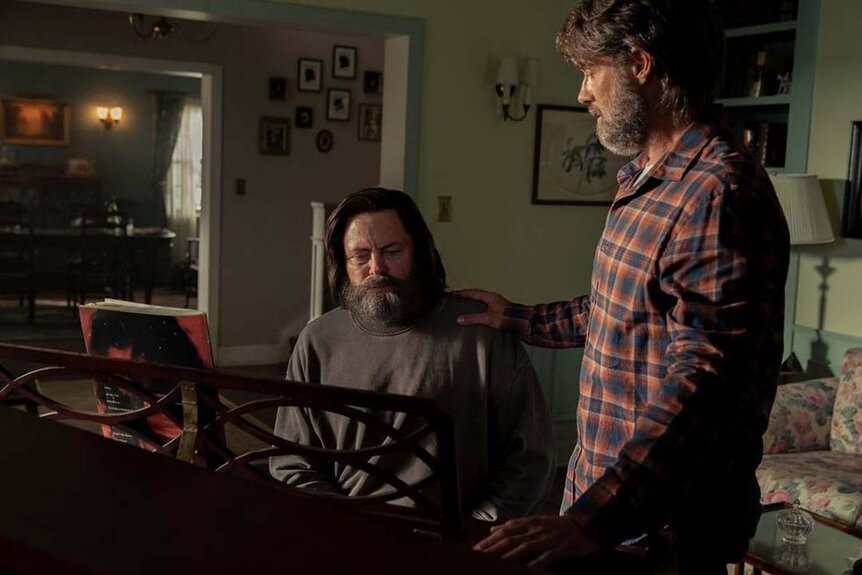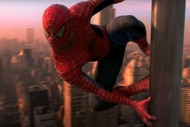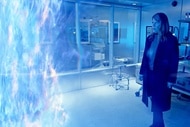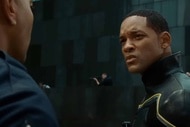Create a free profile to get unlimited access to exclusive videos, sweepstakes, and more!
'The Last of Us' production designer on building the 'repurposed' apocalypse of HBO's hit series
Learn how the sets came together - from the Boston Quarantine Zone to Bill's hometown.
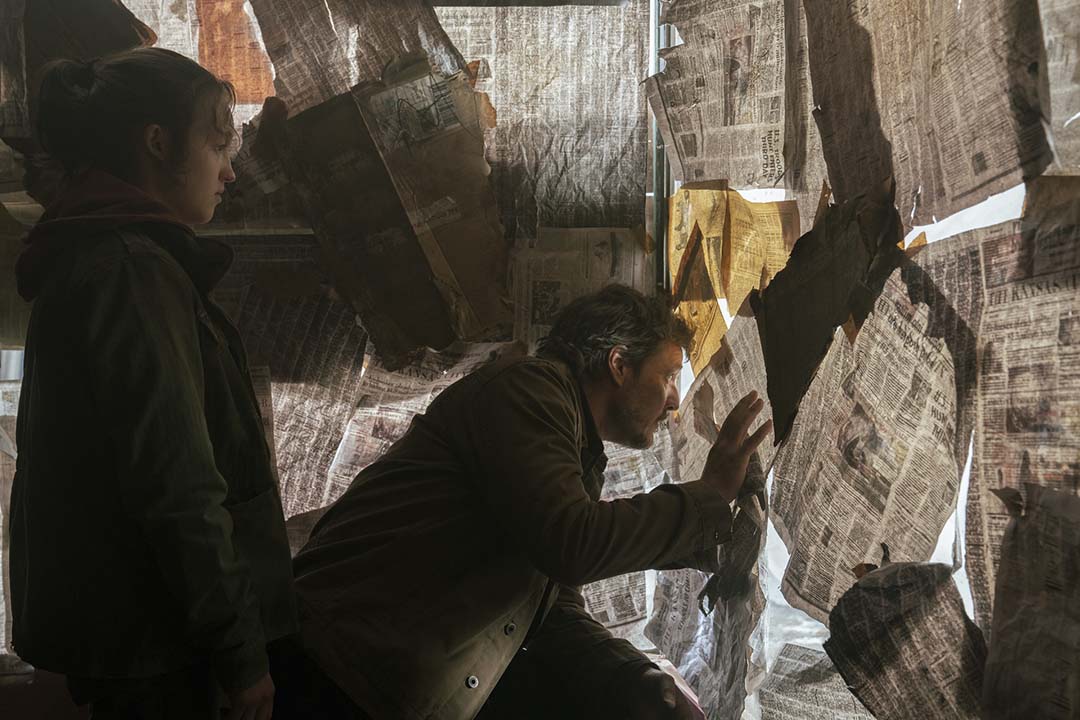
What would our world look like if human civilization suddenly collapsed in 2003?
This what-if scenario took root — not unlike a virulent fungal spore — inside the mind of John Paino when the production designer (a veteran of acclaimed shows like Big Little Lies and The Leftovers) was tasked with building the post-apocalypse of HBO's The Last of Us. Right from the start, he wanted to differentiate the show from other end-of-the-world pandemic projects audiences have seen before.
RELATED: Pedro Pascal tells 'The Tonight Show' crowd how he forgot about landing 'The Last of Us' role
"I didn't really think about The Walking Dead, or any of those things, to be honest," he tells SYFY WIRE over Zoom. "They shouldn't feel like ours because in ours, 20 years have passed. And [those shows are] just kind of happening in real time. I’ve watched The Walking Dead, but I didn't look at it because I thought our show is going to have a broken-down [vibe] and desiccation to it that those shows are not going to have."
The Repurposing Mambo
Before any set construction took place, however, Paino first sat down with Craig Mazin, presenting the co-showrunner and executive producer with images of DIY chairs in Hong Kong taken by photographer Michael Wolf.
"People took a broken-down folding chair and gaffers-taped a wooden leg to it, or maybe used a traffic cone for the back of it," Paino explains. "[Craig] saw that and said, ‘That's the show right there.' That's all I needed to know from that point on. Just do that a million times. This is a world that, for 20 years, nothing has been built. Everything has been repurposed over and over and over and over again. Nothing's thrown away."
That became the guiding "mission statement" throughout filming, along with the assumption that a widespread lack of electricity meant cities could no longer pump excess water away from their streets. "When that stops, the water just goes everywhere, so water damage is a huge thing," Paino explains. "What would that do to the architecture?’ Everything would be swollen, everything would be popping off, and the grout would be falling out of the bricks. That's the minutiae we enjoy chasing."
The concept of moisture-related decay adds an extra layer of tragic irony to the small screen adaptation, implying that massive flooding provided the damp-loving Cordyceps infection a veritable paradise in which to flourish and conquer the spaces where humans once dominated. "Whenever we could, we'd have [the fungus] going through something that had significance of past civilization," Paino says.
Wallpaper Proficiency
A breakaway facet of the "repurpose everything" philosophy was the idea that anything of value had already been claimed over the last two decades. "If someone was in a room, we always tried to think about, ‘Okay, so who lived here beforehand?’ But that was tricky because everything would be taken out of the room," Paino reveals. "So wallpaper became one of the most important things ... And that might have an Easter egg in it or it might be something we added just to give a little hint of what the room was used as before."
Joel's apartment, for instance, says more about the people who once lived there than it does about the grizzled smuggler played by Pedro Pascal. The objective was to make the character "feel out of place and unsettled," notes Paino.
"The official language was that it wasn't going to tell you too much about Joel," he adds. "There was a lot of discussion of, ‘Would he even have some of the things that he smuggled lying around? No, because the police could break in at any point.' So again, just making it seem like there was a family that loved each other there at some point. And so, when you have the flowered wallpaper and things like that, not only is that a nod to the infection a little bit, but it also is a nod to [the fact that] somebody cared for this place, and it’s not Joel."
Starting Anew
While plenty of concept art already existed from the development of the Naughty Dog games, Paino decided to start almost from scratch. "They did an incredible job in creating a sense of atmosphere, but we have to find those things and we have to make them," he says. "We also want them to be much more heightened and give them more layers of decay and things like that."
As such, there was a "deep dive" for every set and location. The look of the FEDRA-operated Quarantine Zone in Boston, for example, was inspired by the Gaza Strip, English council housing, and Indian slums. In particular, Paino and his team wanted to replicate how these poorer communities often share a single power source.
"There's a million wires running off of that for people to kind of bogart on that," the production designer explains. "One of the great things with Craig was [he said,] ‘We don't want to do a lot of CGI, we want it to be real.' So in the QZ, when you see wires, that's all put in. Our amazing set dressers jumped all over from house-to-house in those sets and put that all up ... Some of our sets had [VFX] extensions, but the majority of our world was built because we did not want it to feel like a Volume."
A lot of the sets were going to have be built from scratch anyway, given how Calgary (where the bulk of production took place) has a complete lack of "broken-down" areas that could be further augmented by a film crew.
"There are liminal places that maybe used to be a Navy base or tenement housing that's abandoned. Nothing like that was in Calgary," Paino recalls. "There were no locations that would work for a show [like this] ... the Canadians keep things pretty clean and buttoned-up."
We Demand A Shrubbery!
Another obstacle was the native flora, mostly comprised of massive fir trees that do not commonly grow in Texas or on the East Coast of the United States. "When we were doing Texas [in Episode 1], we had to wrap a lot of trees in a different kind of bark because there would literally be a 200-foot fir tree in someone's front yard," Paino explains. "And they weren’t keen on us pulling them out of the ground. We did do some pulling, but not for a 200-foot tall pine tree."
The quaint little town occupied by Bill (Nick Offerman) and Frank (Murray Bartlett) in the heartbreaking third episode, meanwhile, was built on a current flood zone where homes once stood.
"We had the street and the sidewalks [but] nothing else," Paino says. "There was some grass there, but it's supposed to be a hamlet [outside of] Boston. There were no privet bushes or any proper trees ... We really had to go out of our way to find privet shrubbery [and] things that would be in New England. That became like a running joke. I almost went out and bought everybody a little miniature fir tree for Christmas and put it in their offices because I was just a guy who kept saying, ‘Well, those fir trees wouldn't be in New England.'"
For the actual structures in Bill's town, Paino channeled the museum-like towns you find dotted throughout the East Coast: "People really keep them almost like historical sites ... I wanted to make sure all those things were there [with] the historical markers, because that just reinforces the sense that this is a hermetically-sealed place, and that this is guy is living in another reality ... I wanted to make sure all those things were right and proper. He also keeps them clean. It's like his little glass menagerie, so-to-speak."
The interior of Bill's house was meant to imply that the character had once lived with his mother:
"It should not feel like he has a presence in the house — his presence is in the bunker and maybe in his room. Maybe his mom was one of the matriarchs of the town [and] his family settled there since the Revolutionary War period. Obviously, it is a Colonial house. The kitchen still has a giant hearth in it. It’s a renovated Colonial house, but still has the trappings of the Colonial period. That is also a nice way to reference back to the fact that history is gone and doesn't matter anymore. It's kind of like a museum, it's stultified. It helped the story and helped his character."
A Sense Of Scope
The first two episodes of the show offer the viewer a greater sense of context with a pair of prologues that track the history of the infection — both from conceptual and practical standpoints. Episode 1, for example, kicks off with a '60s-era talk show on which a solemn-faced doctor (John Hannah) presciently warns that humanity's downfall will come from a mutated specie of fungus.
"That was a lot of fun to design," Paino says, citing the David Susskind and Dick Cavett-hosted television programs of yesteryear as inspiration. "It was something that Craig came up near the end of our production run and I thought it was really effective."
Episode 2, on the other hand, takes us to the bustling streets of Jakarta — suspected ground zero for the Cordyceps outbreak — where Ratna Pertiwi, a preeminent scholar of mycology (Christine Hakim) learns about the fungal threat and instructs the government to bomb the city and everyone in it without delay.
"The thing I wanted to emphasize in the first laboratory [is that] there's a lot of air ducts you would have because they would do the ventilation," Paino says. "I wanted them to be big and sinister and hanging over everyone's heads as if, as far as we know, the disease is going right out of them ... This is an opportunity to give the show some scope and some breadth, so we're not always just trudging through dark hallways. We wanted to make sure they felt lighter, airier."
He concludes: "This is an infectious disease lab for a major city with a population of 60 million people. So we wanted to make sure it felt right in proportion. Remember, this is from 2003, so this is all stuff from the past at this point. We figured that the lab would be sophisticated, but I didn't want it to like sci-fi-y. I wanted it to be very pedestrian in its colors and in its equipment. It's taken from reality mostly. The stainless steel lab is from reality and it was great that Cynthia [Ann Summers], our costume designer, was able to find those old-style suits that are connected with air, which I don't think they even use anymore."
New episodes of The Last of Us premiere on HBO and HBO Max every Sunday at 9 p.m. ET. With that said, Episode 5 debuted on HBO Max last night (two days earlier than planned), so as not to conflict with the Super Bowl.
Looking for more horror? Check out SYFY's Chucky. The first season is streaming now on Peacock, and Season 2 can be found on SYFY.
